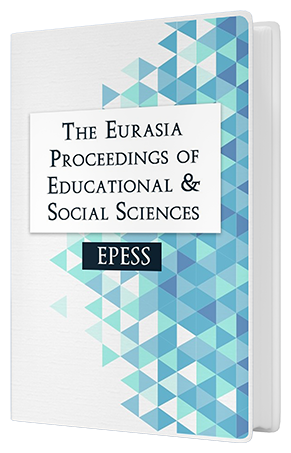THE EXAMINATION OF 7TH GRADE STUDENTS’ ACHIEVEMENTS IN MATHEMATICAL PATTERNS
Keywords:
Elementary school mathematics curriculum, numbers and operations learning domain, algebra learning domain, pattern representation forms, 7th grade studentsAbstract
The aim of this study is to determine the 7th grade students’ achievements in mathematical patterns presented by figures, tables, number sequences, and word problems. This research is a situation determination study where quantitative methodology is used. The sample of the study consisted of 47 female and 50 male students, totally 97 students from 7th grades in Giresun city on 2015-2016 academic year. Pattern topic oriented 7 questions were used as the data gathering tool. The questions which focused on the attainments of pattern topic were prepared by the researcher. It was determined that students could perform specialization in figural patterns but they couldn’t reach a generalization. In other words, it was observed that students could find the required steps according to a given rule and so they could easily reach the situation which involved operational knowledge. Also, it was seen that although students found the number of figures in the next step of the pattern, they couldn’t find the general rule that represented the pattern. Another result of the study was that students could recognize patterns of number sequences but they couldn’t find the general term of the pattern. Lastly, it was determined that students couldn’t understand patterns which were represented as word problems and they failed at these kind of pattern questions but they had success in pattern questions represented by tables. In this context, it can be offered to give much place to representation forms of patterns by figures, tables, number sequences, and word problems while students are given experiences of patterns.Downloads
Published
Issue
Section
License
Copyright (c) 2016 The Eurasia Proceedings of Educational and Social Sciences

This work is licensed under a Creative Commons Attribution-NonCommercial-ShareAlike 4.0 International License.
The articles may be used for research, teaching, and private study purposes. Any substantial or systematic reproduction, redistribution, reselling, loan, sub-licensing, systematic supply, or distribution in any form to anyone is expressly forbidden. Authors alone are responsible for the contents of their articles. The journal owns the copyright of the articles. The publisher shall not be liable for any loss, actions, claims, proceedings, demand, or costs or damages whatsoever or howsoever caused arising directly or indirectly in connection with or arising out of the use of the research material. All authors are requested to disclose any actual or potential conflict of interest including any financial, personal or other relationships with other people or organizations regarding the submitted work.




